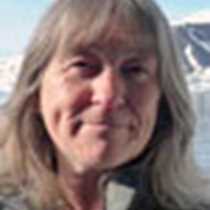Orkney, Scotland
Through the night the Endeavour sailed from the Western Isles of Scotland, where last evening we had visited the standing stones of Calanais in the eerie light of a Hebridean dusk. After breakfast we arrived in Orkney, where our first destination was to be the small island of Shapinsay. At the quayside the Zawadski family was waiting to welcome us to their island home. They showed us around their historic residence, Balfour Castle, a magnificent house built in the 1840s for David Balfour, complete with a concealed passageway between the library and the formal sitting room. It was here that, inspired by the house and its romantic setting, the author Robert Louis Stevenson wrote part of ‘Treasure Island’. The house has a wonderful walled kitchen garden which supplies its fruit, vegetables and flowers throughout the year, and has done so since the house was built, an amazing achievement considering its latitude of 59º, further north than Churchill, Manitoba. The landscape of Orkney is a low-lying green carpet of farms, but quite treeless due to the harsh winter salt-laden storms. Around Balfour Castle, however, a unique woodland of ash, alder, hornbeam and horse chestnut has been nurtured, a delight to stroll through on a June morning.
All of the islands in Orkney are remarkable for their abundance of historical and archaeological sites, and in the afternoon we investigated several of the most spectacular of these. Neolithic farmers settled in this island haven more than 5,000 years ago, and left us astonishing monuments such as the chambered tomb of Maes Howe, constructed around 2,900 BC from massive but precisely-cut slabs of old red sandstone, and the Ring of Brodgar. This circle of originally sixty standing stones has stood silently overlooking the waters of Harray Loch and Stenness Loch for almost five millennia. But most memorable of all, perhaps, is the perfectly preserved village of Skara Brae where, for 600 years from 3,100 BC onwards, a stone-age community dwelt in small family groups. Their intact stone houses still contain the beds in which they slept, the open hearths where family meals were cooked and which gave warmth and light through the long winters, the hand-querns in which, daily, they ground their wheat and barley, and the magnificent stone dressers upon which stood their pots and other cherished possessions (see photo).
Through the night the Endeavour sailed from the Western Isles of Scotland, where last evening we had visited the standing stones of Calanais in the eerie light of a Hebridean dusk. After breakfast we arrived in Orkney, where our first destination was to be the small island of Shapinsay. At the quayside the Zawadski family was waiting to welcome us to their island home. They showed us around their historic residence, Balfour Castle, a magnificent house built in the 1840s for David Balfour, complete with a concealed passageway between the library and the formal sitting room. It was here that, inspired by the house and its romantic setting, the author Robert Louis Stevenson wrote part of ‘Treasure Island’. The house has a wonderful walled kitchen garden which supplies its fruit, vegetables and flowers throughout the year, and has done so since the house was built, an amazing achievement considering its latitude of 59º, further north than Churchill, Manitoba. The landscape of Orkney is a low-lying green carpet of farms, but quite treeless due to the harsh winter salt-laden storms. Around Balfour Castle, however, a unique woodland of ash, alder, hornbeam and horse chestnut has been nurtured, a delight to stroll through on a June morning.
All of the islands in Orkney are remarkable for their abundance of historical and archaeological sites, and in the afternoon we investigated several of the most spectacular of these. Neolithic farmers settled in this island haven more than 5,000 years ago, and left us astonishing monuments such as the chambered tomb of Maes Howe, constructed around 2,900 BC from massive but precisely-cut slabs of old red sandstone, and the Ring of Brodgar. This circle of originally sixty standing stones has stood silently overlooking the waters of Harray Loch and Stenness Loch for almost five millennia. But most memorable of all, perhaps, is the perfectly preserved village of Skara Brae where, for 600 years from 3,100 BC onwards, a stone-age community dwelt in small family groups. Their intact stone houses still contain the beds in which they slept, the open hearths where family meals were cooked and which gave warmth and light through the long winters, the hand-querns in which, daily, they ground their wheat and barley, and the magnificent stone dressers upon which stood their pots and other cherished possessions (see photo).




